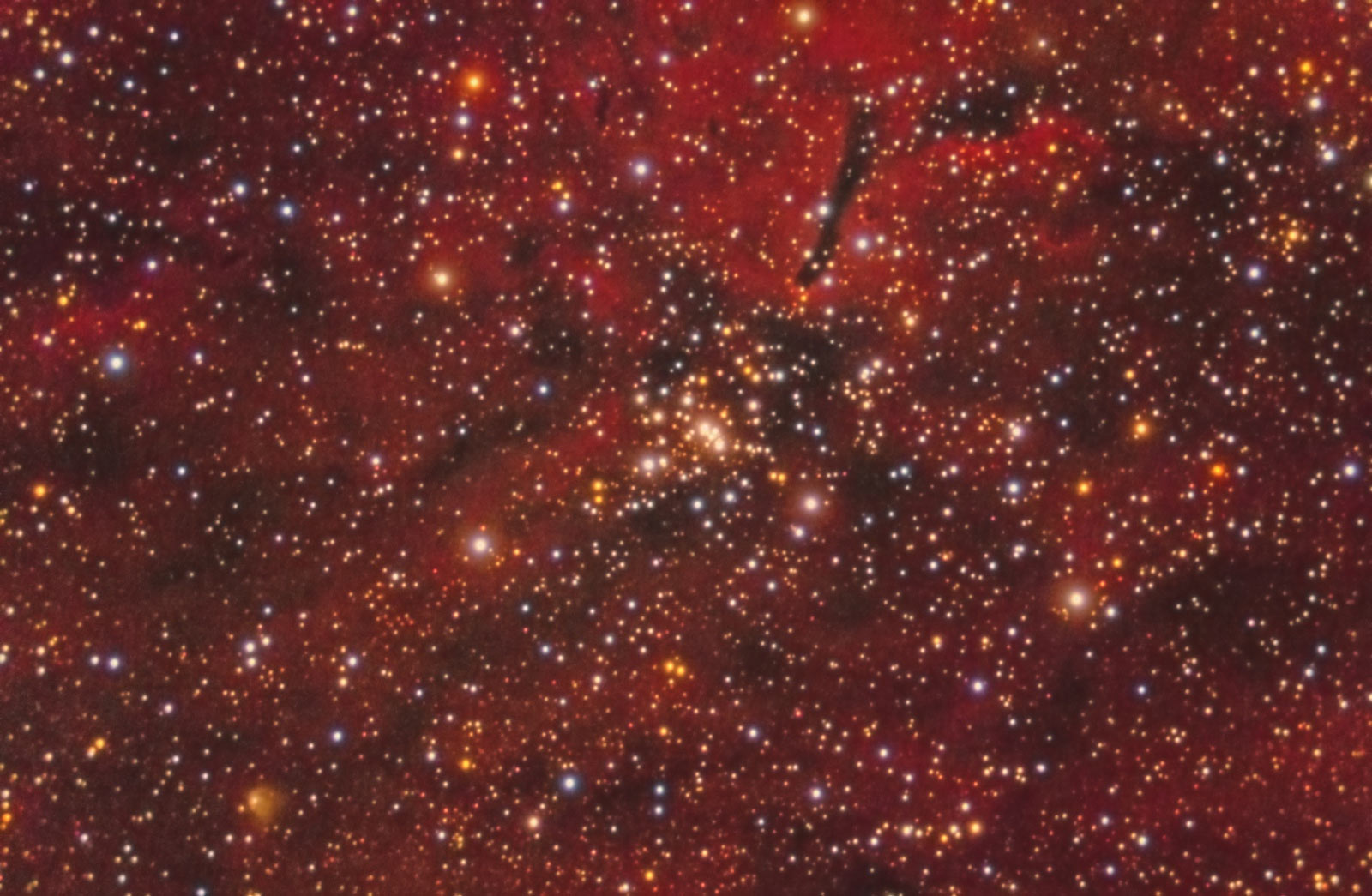NGC 6823 and NGC 6820
by Alejandro Tombolini
Introduction
Image of Christoph Puetz publicated in Image Processing Challenges - Complete description of a very weak nebulae - Main notes: MaskedStretch, Saturation, ATWT for Chrominance noise reduction, LogStretch. Date: Aug 2012.
Processing
First I have used HistogramEqualization to see the information in the image and select a place where to make the preview for use in BackgroundNeutralization.
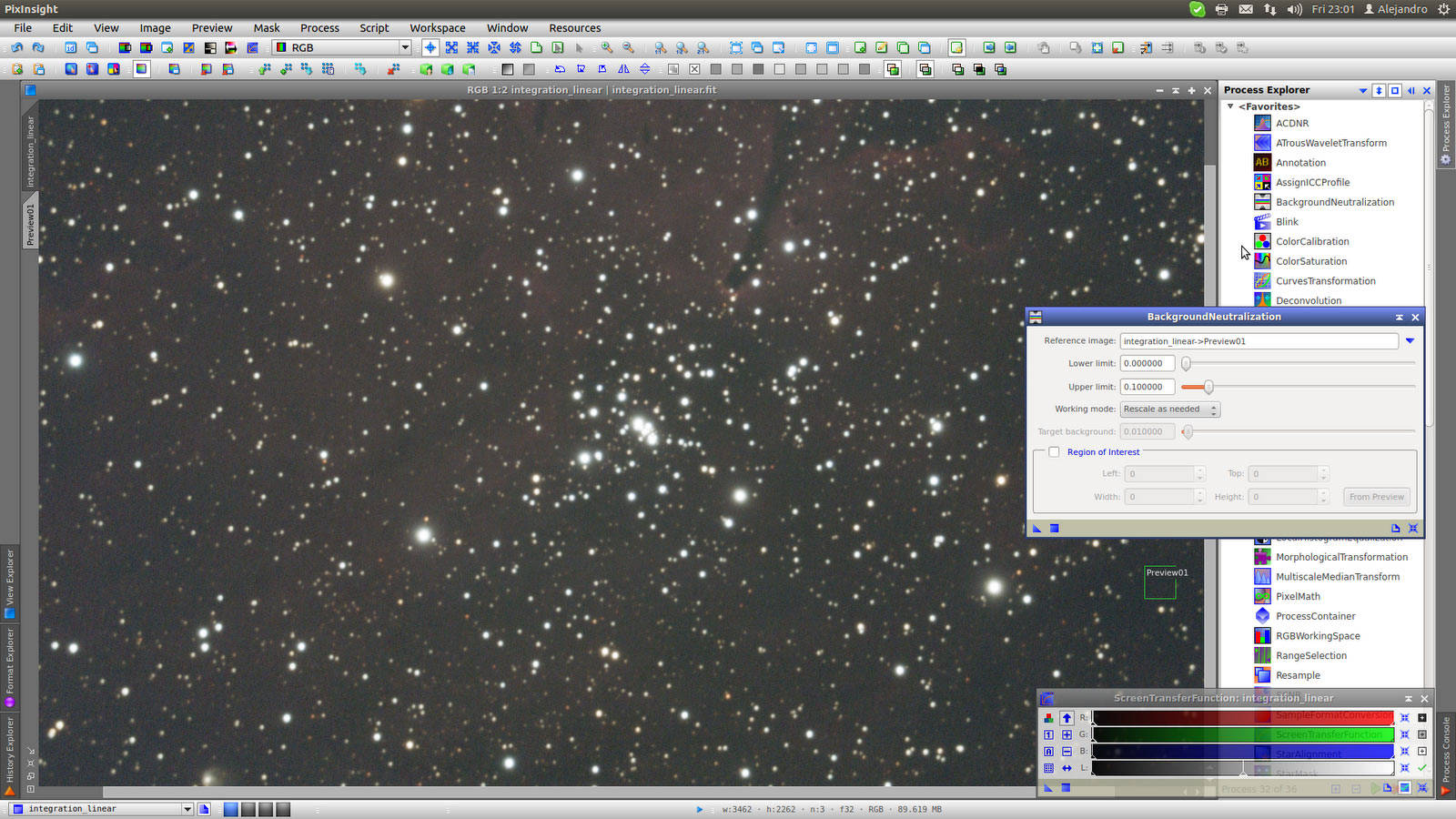
After that CBR to remove the horizontal banding in the bottom of the image.
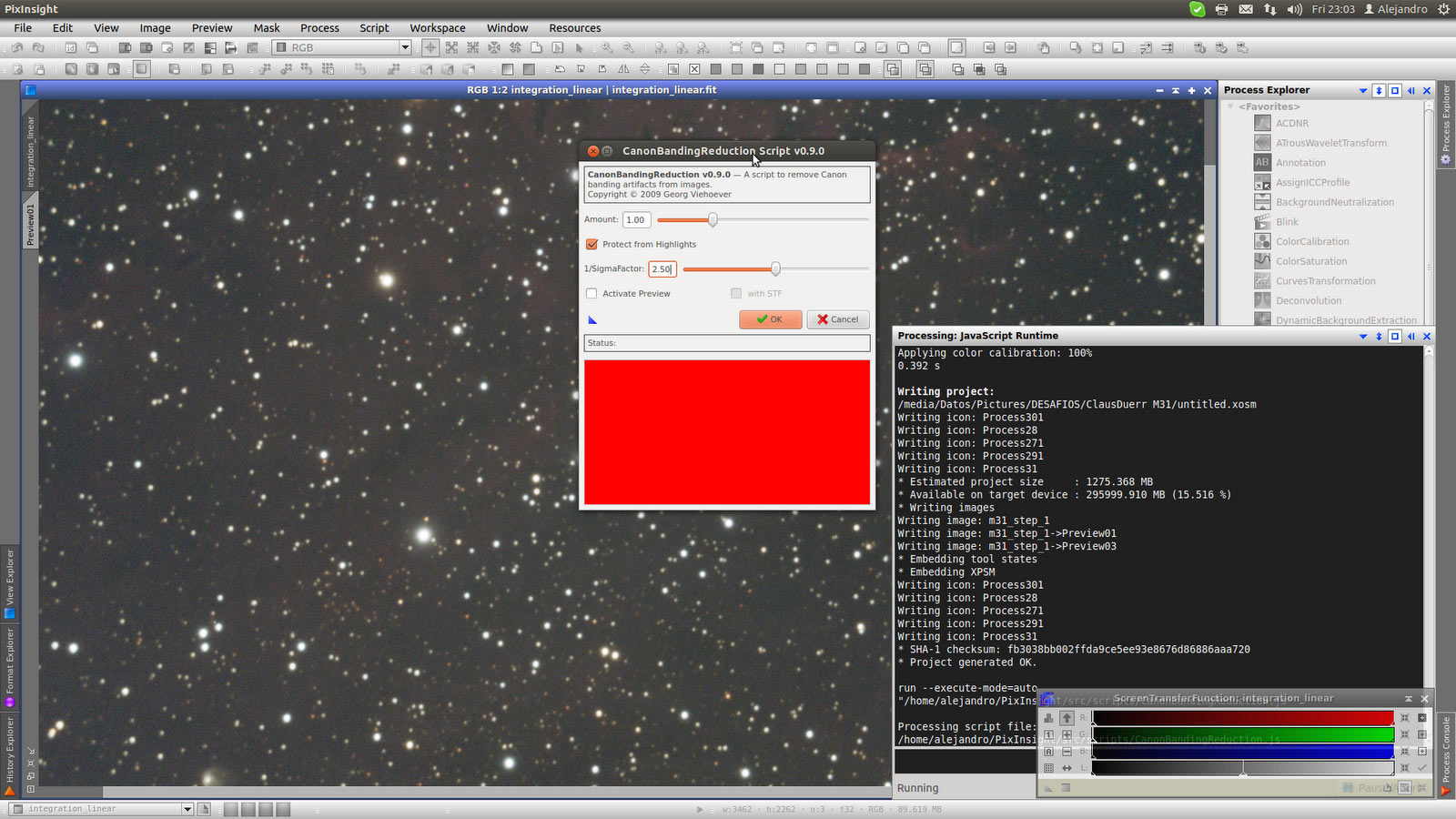
Once again helped with HistogramEqualization detect the places where to place samples for use with DBE. (Generate a clone, make samples over it, generate the DBE instance and then apply on the image)
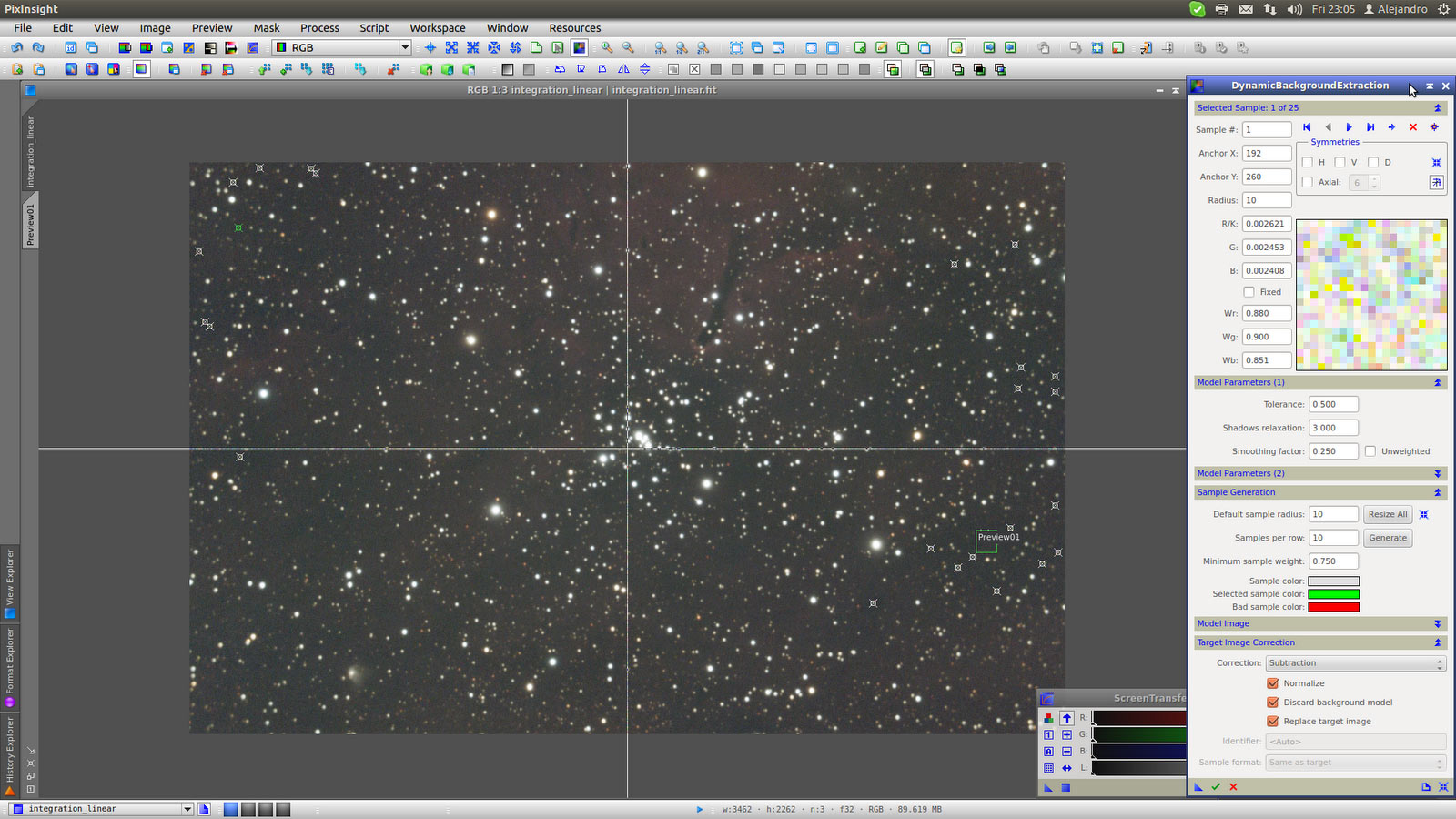
ColorCalibration using the same preview used for BackgroundNeutralization as Background Reference image and the complete image for White reference image.
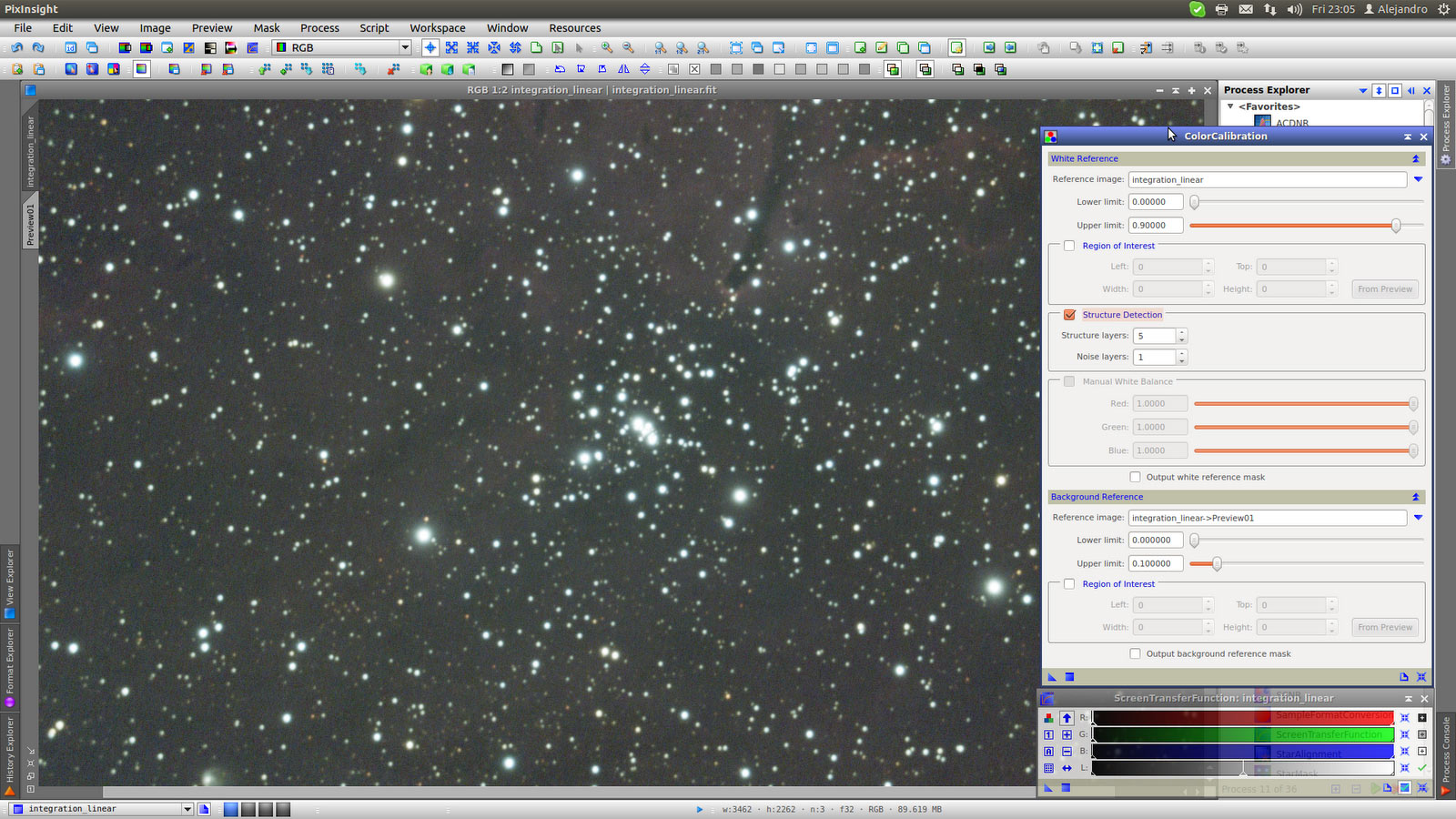
Generate the PSF and use it in Deconvolution protecting stars cores with starmask.
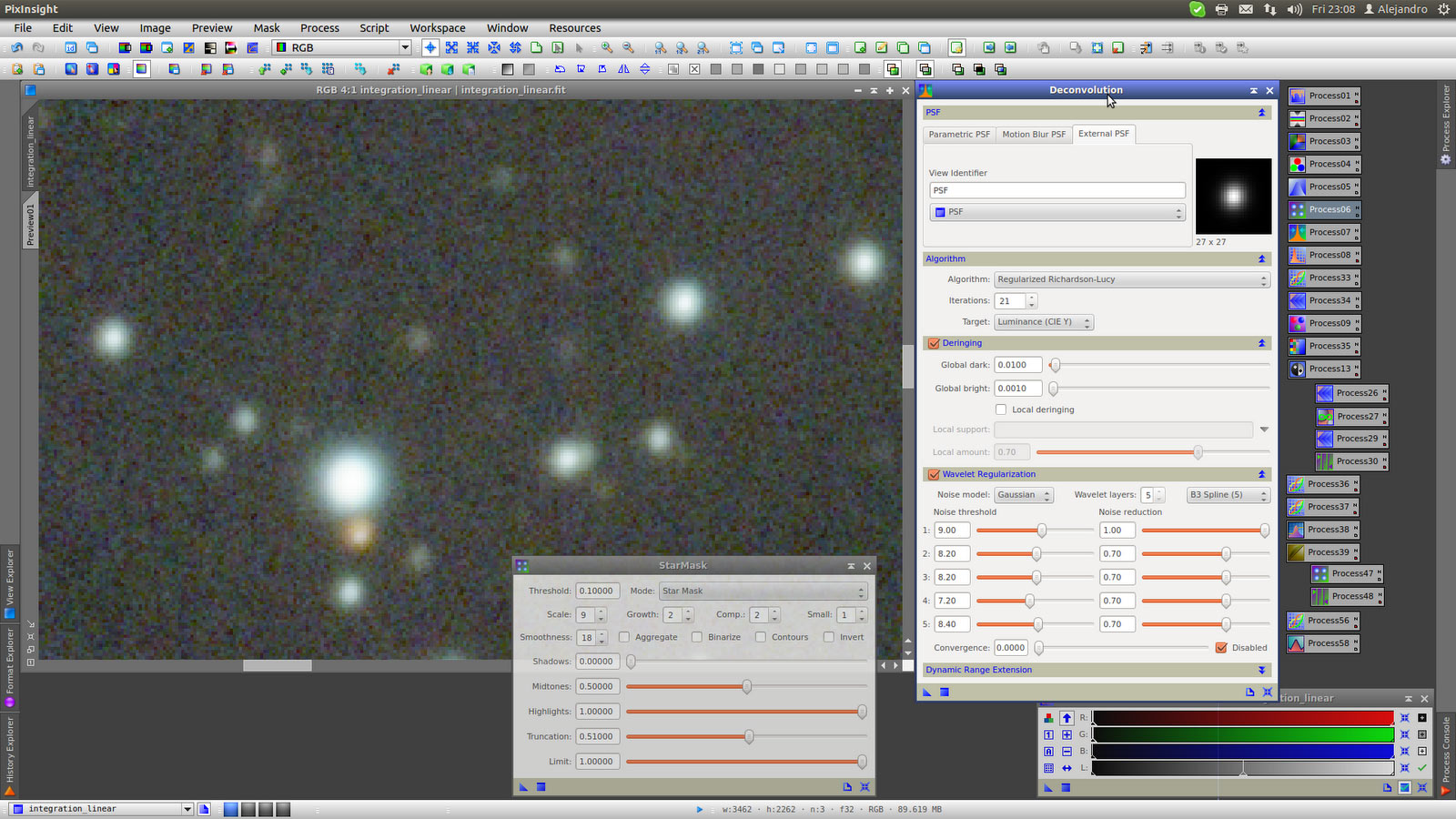
A sequence of Masked Stretch until Target median of 0.4. This is time consuming when you save the project and I must apologize at this point because I could not save the project every step, and I can not remember if some other clips were applied in between in addition to the last shadows.
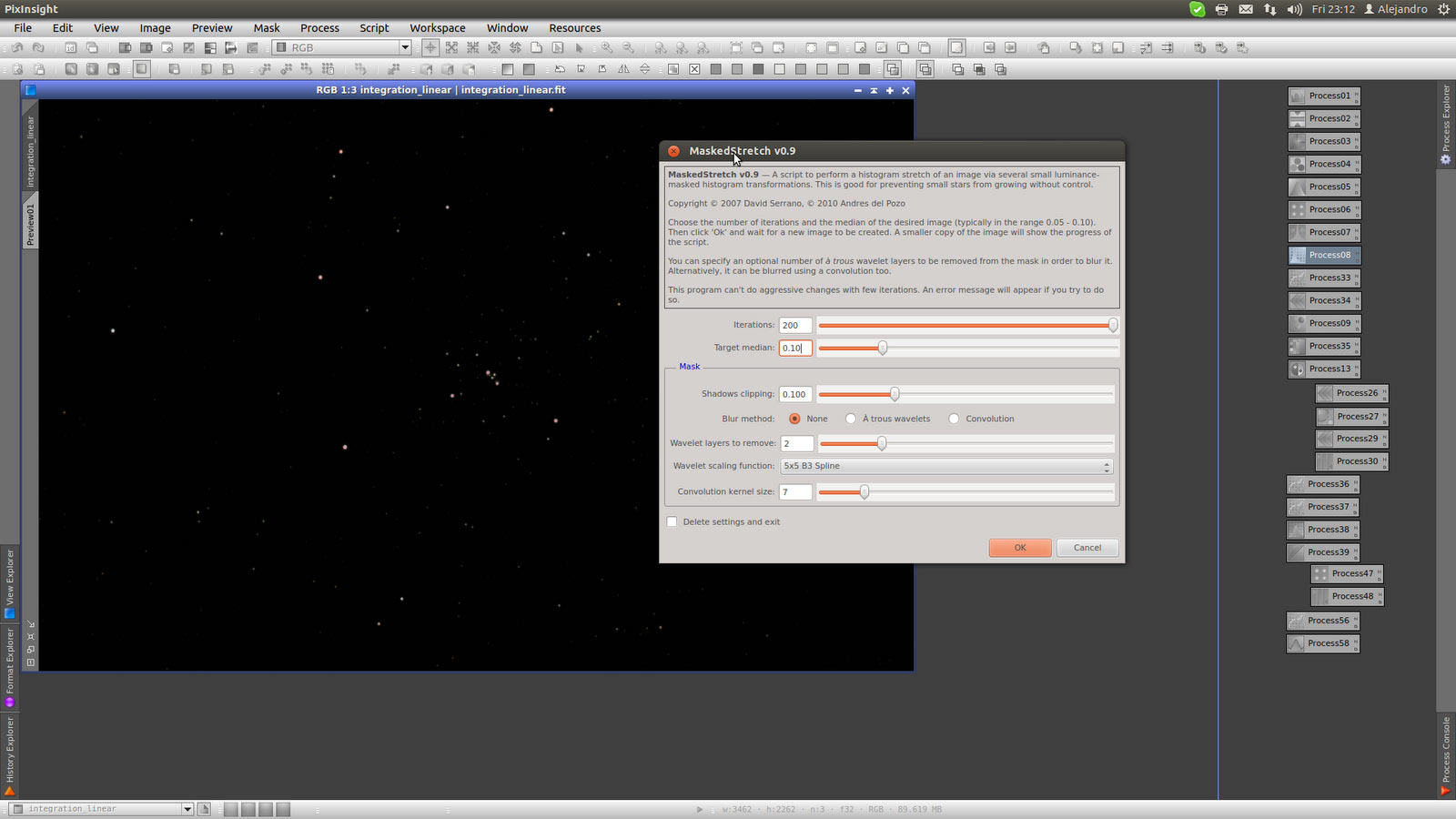
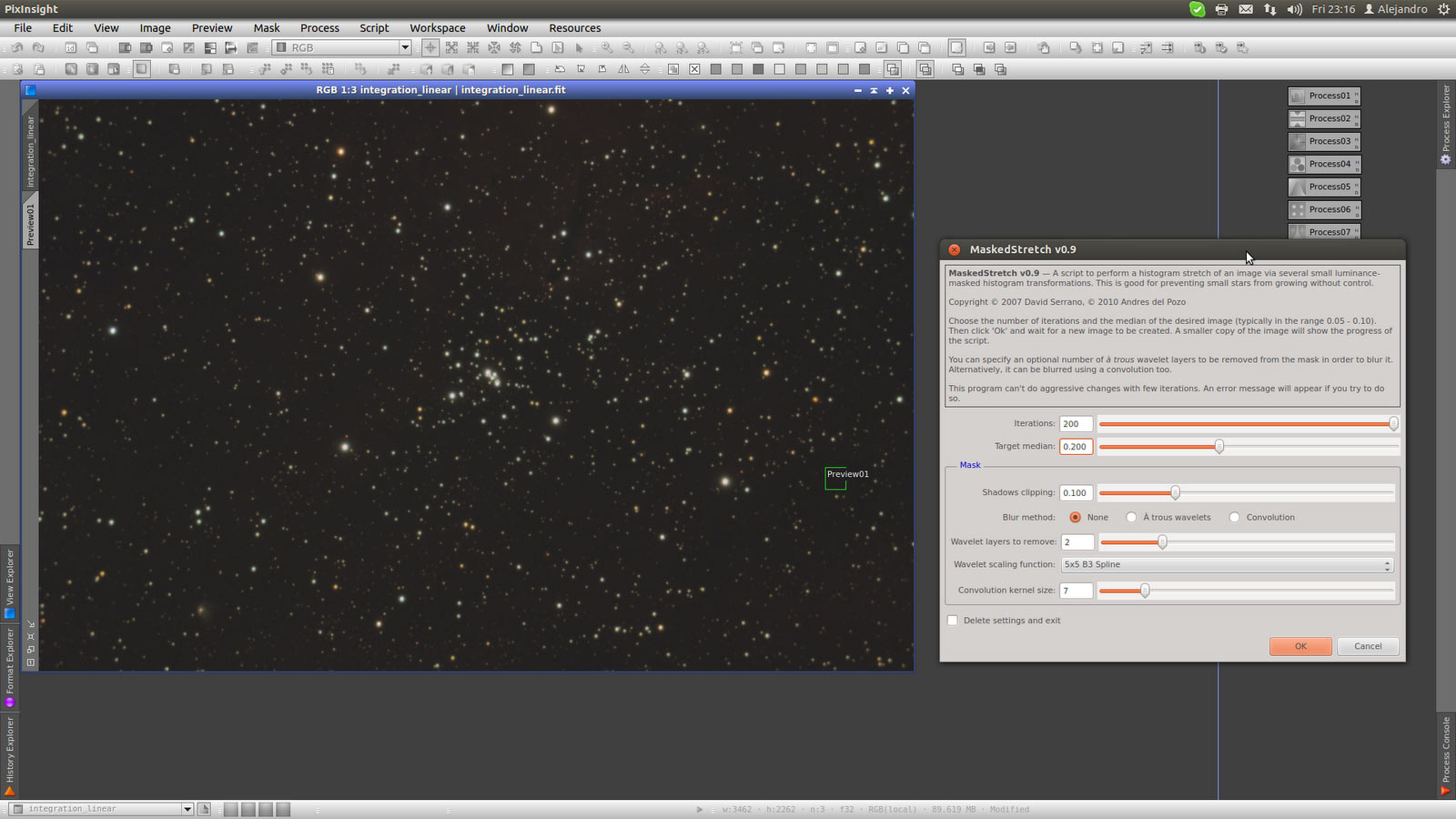
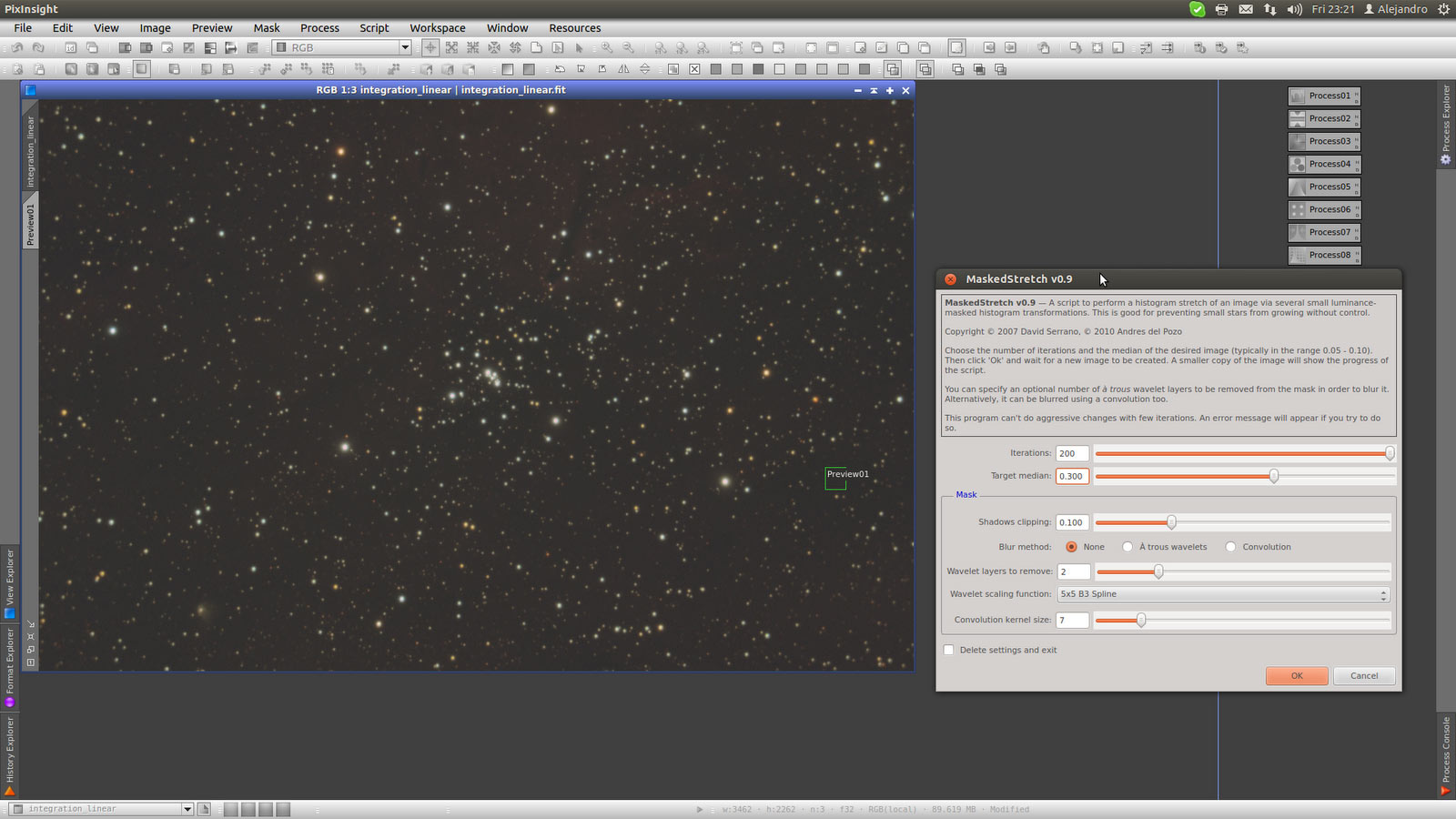
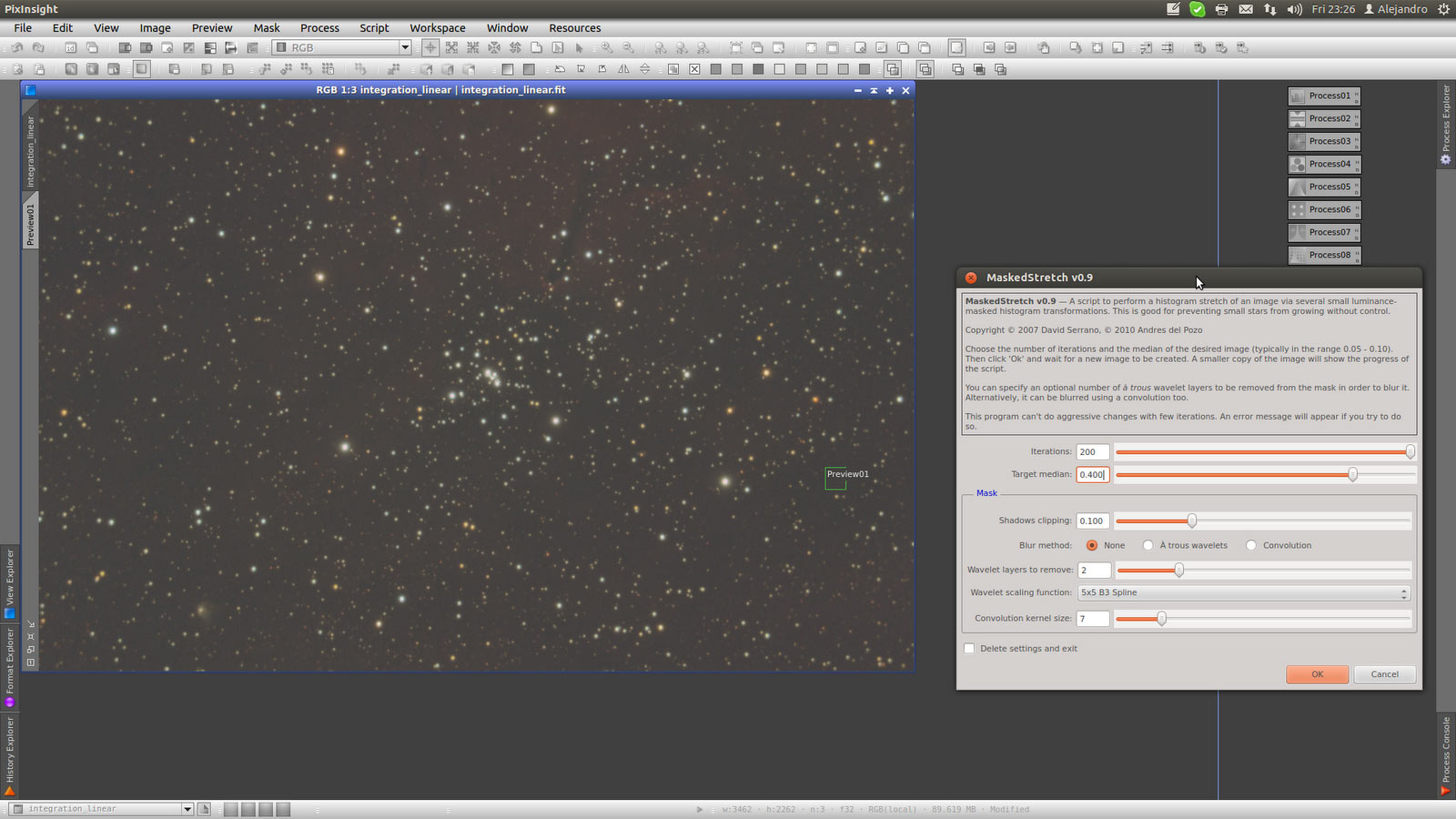
With HT clip shadows.
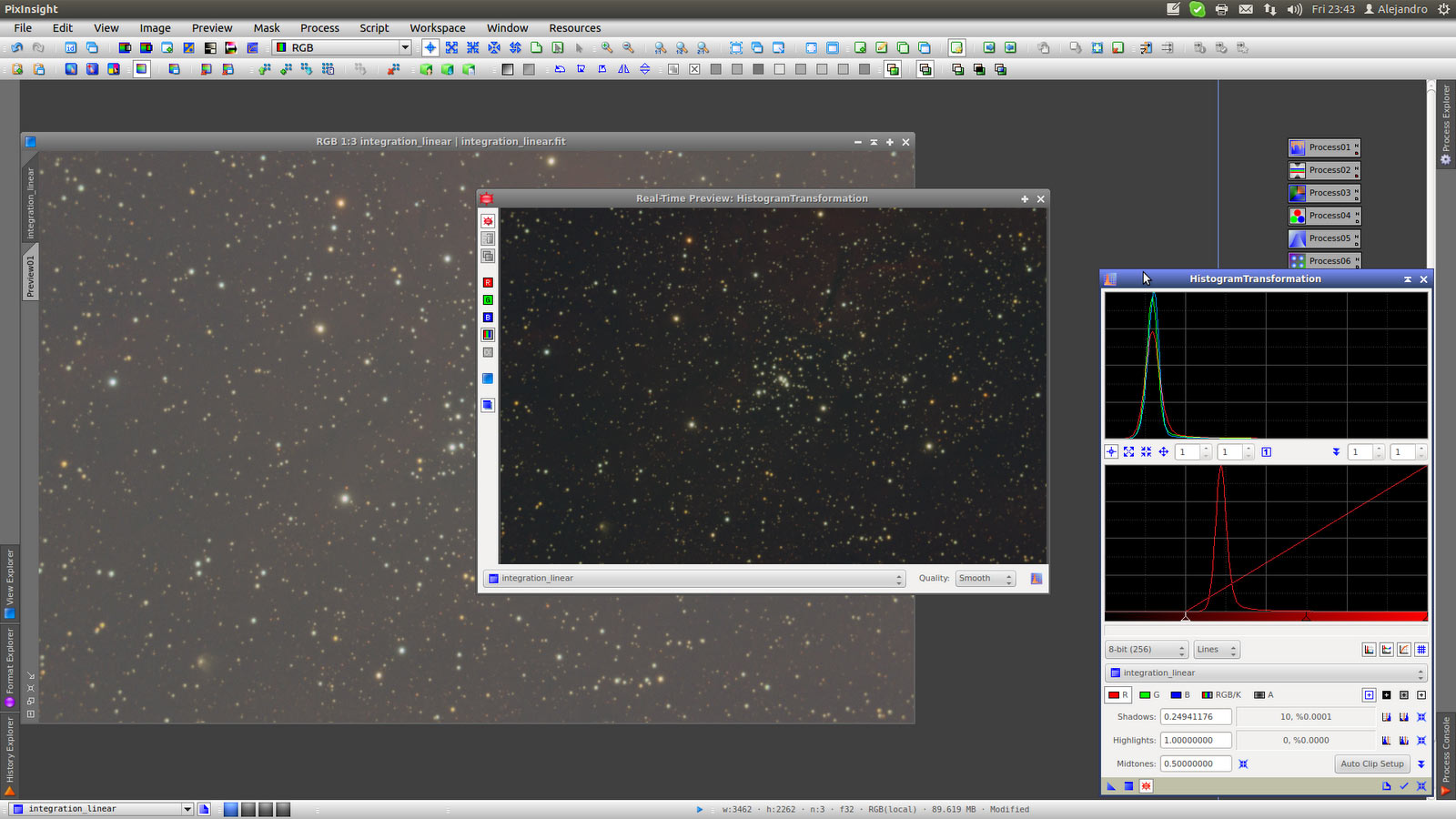
CurvesTransformation to increase contrast, saturations and colors.
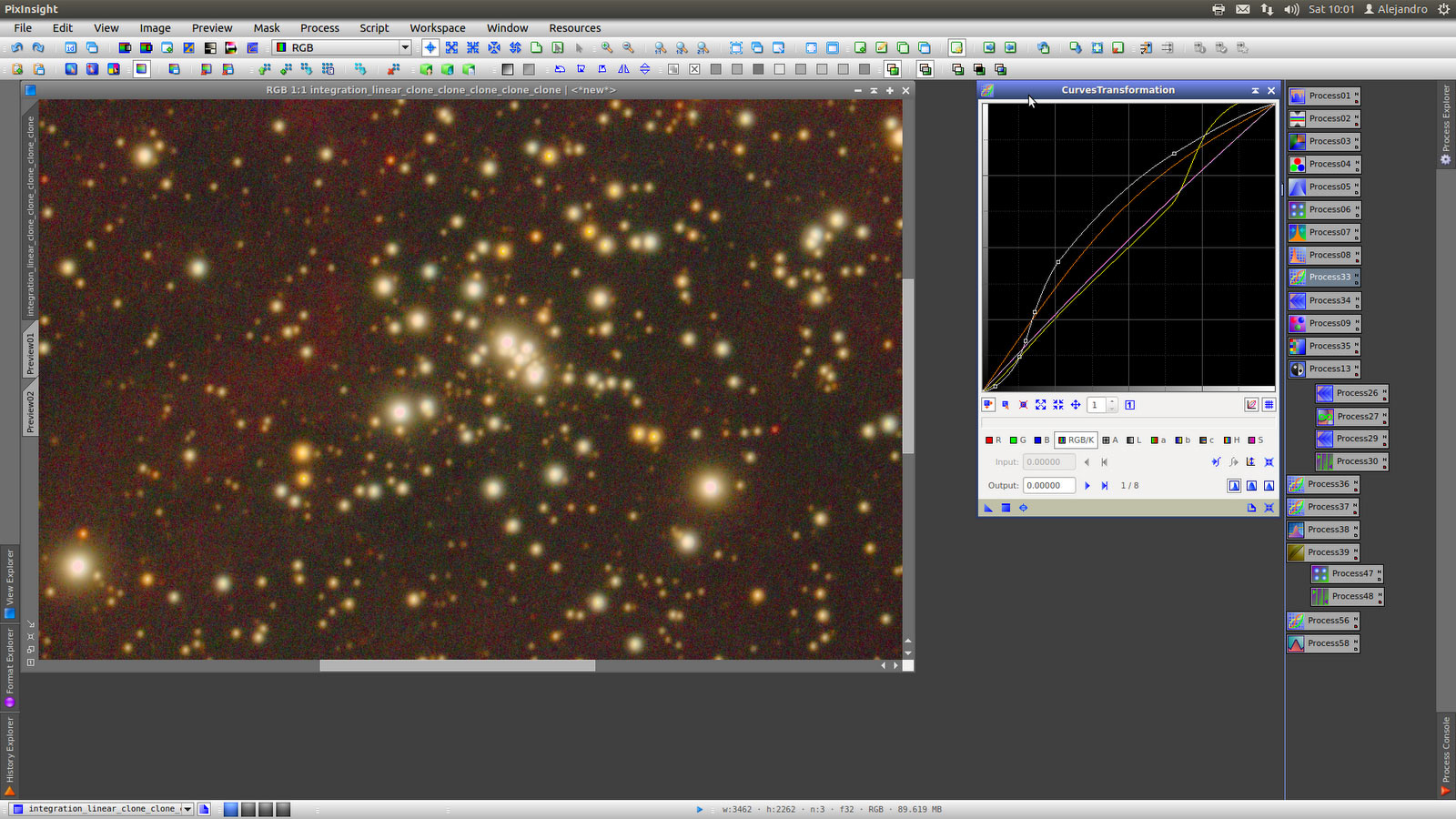
More contrast and Chrominace Noise Reduction using ATWT.
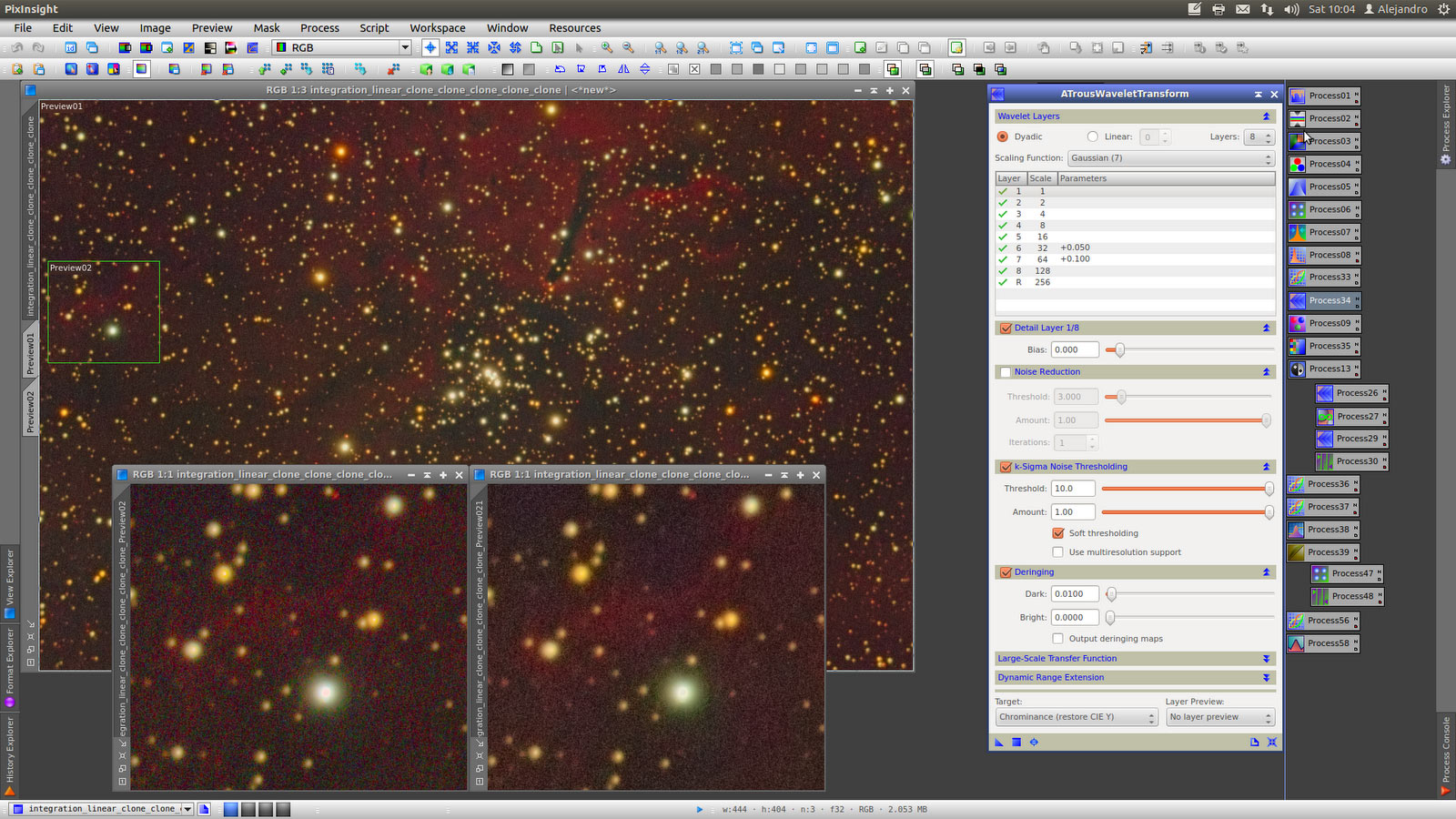
SCNR to eliminate greenish.
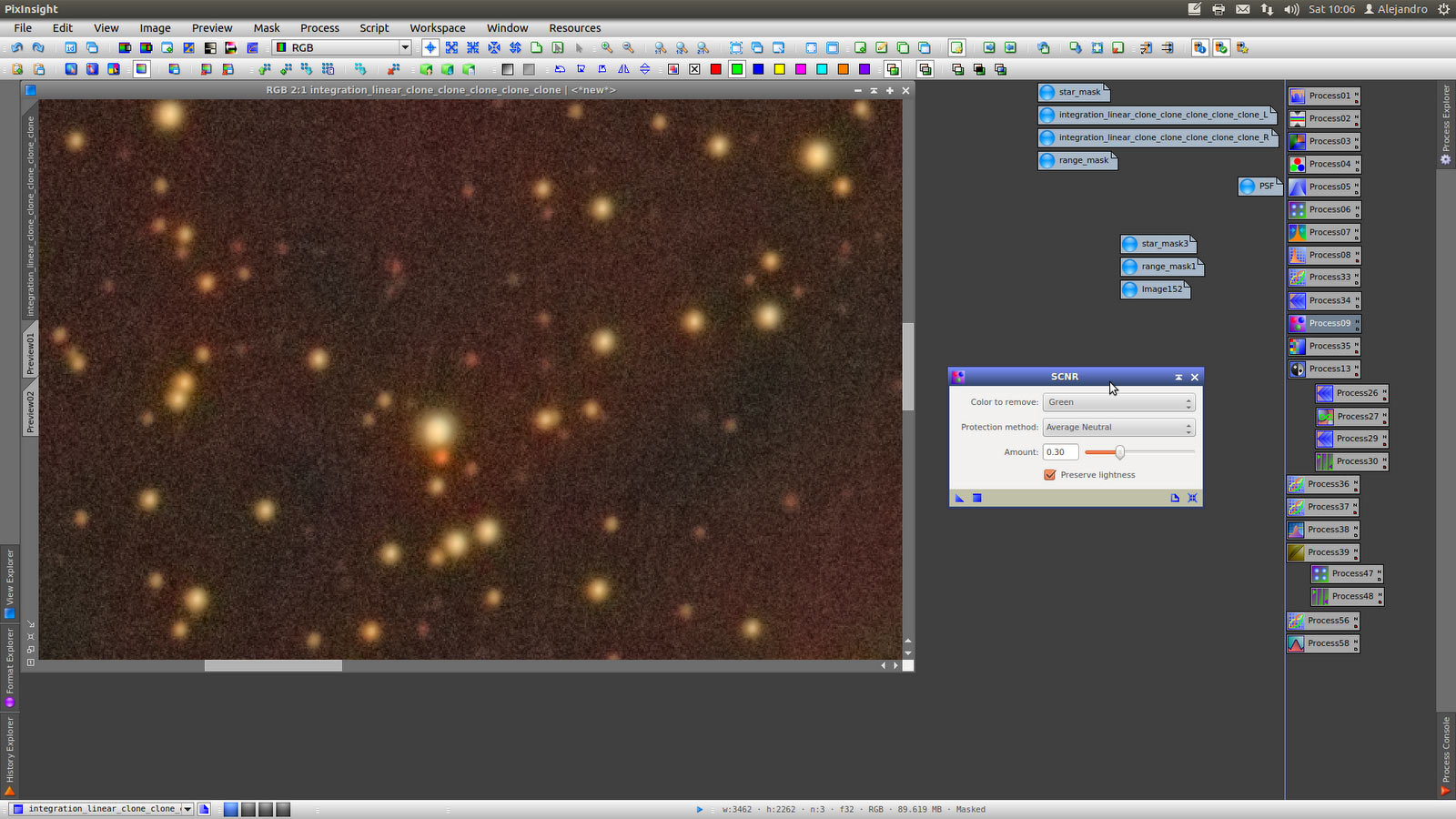
Noise reduction with L mask protecting stars using GREYCstoration.
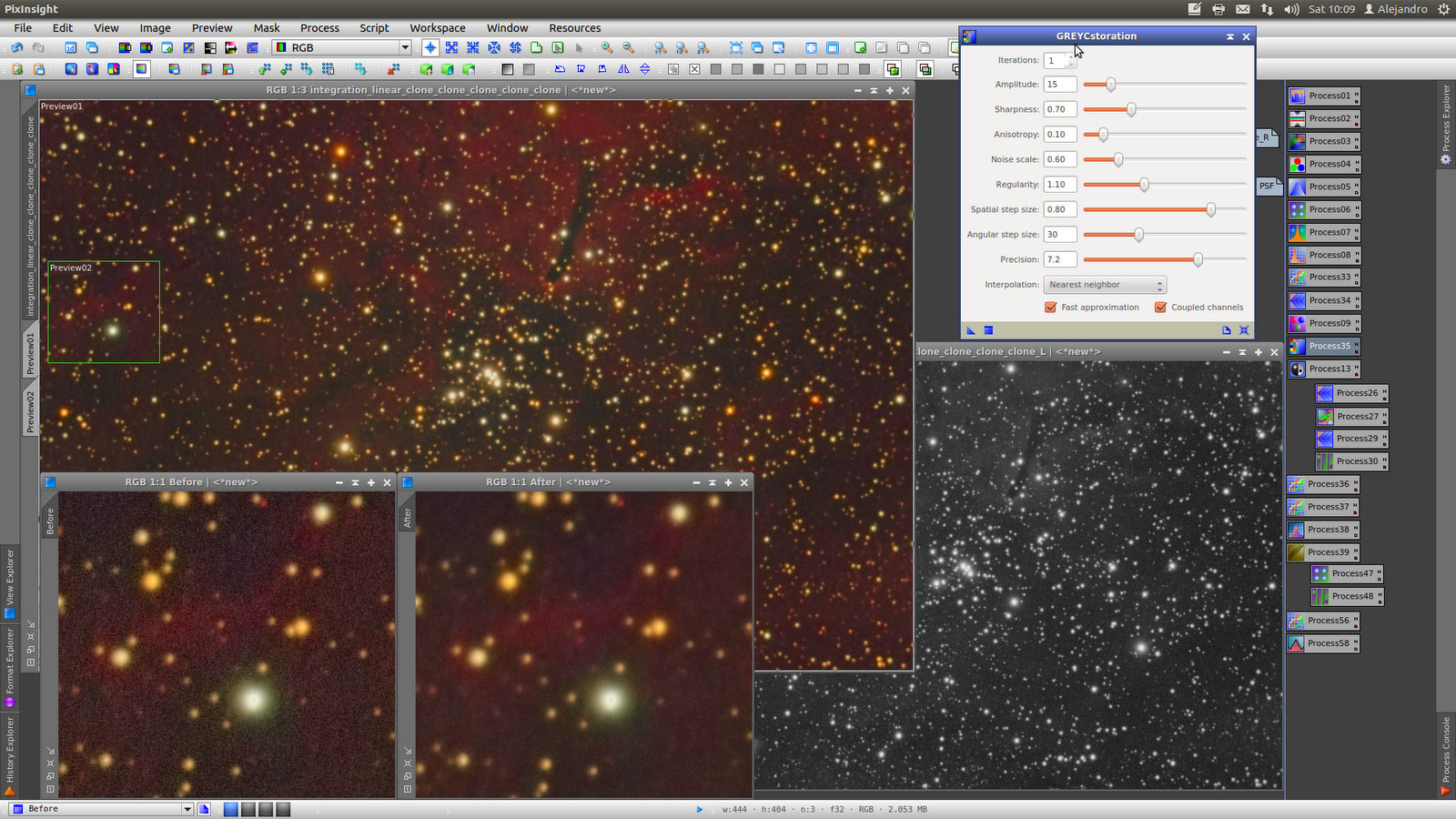
Still looking for more contrast use LHE with the same L mask protecting stars (At this time I detect some problems in stars cores, maybe the previous L mask was not good enough and was caused for GREYCstration.
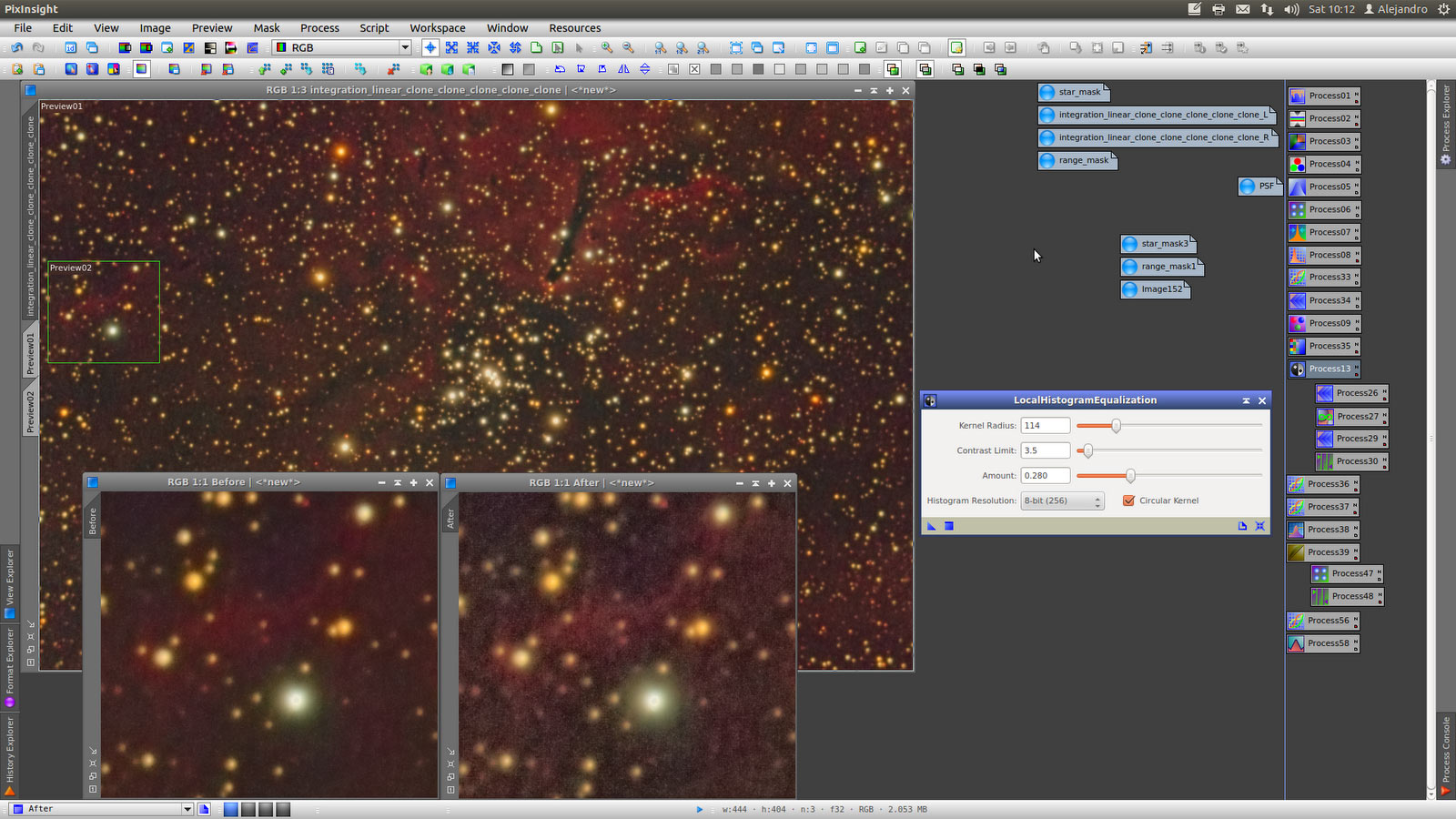
Now I will built a mask without stars to protect bright nebulae and apply curves. As R channel has the information, extract it and duplicate, applying ATWT on duplicate to remove layer bigger than scale of 256 pixel,
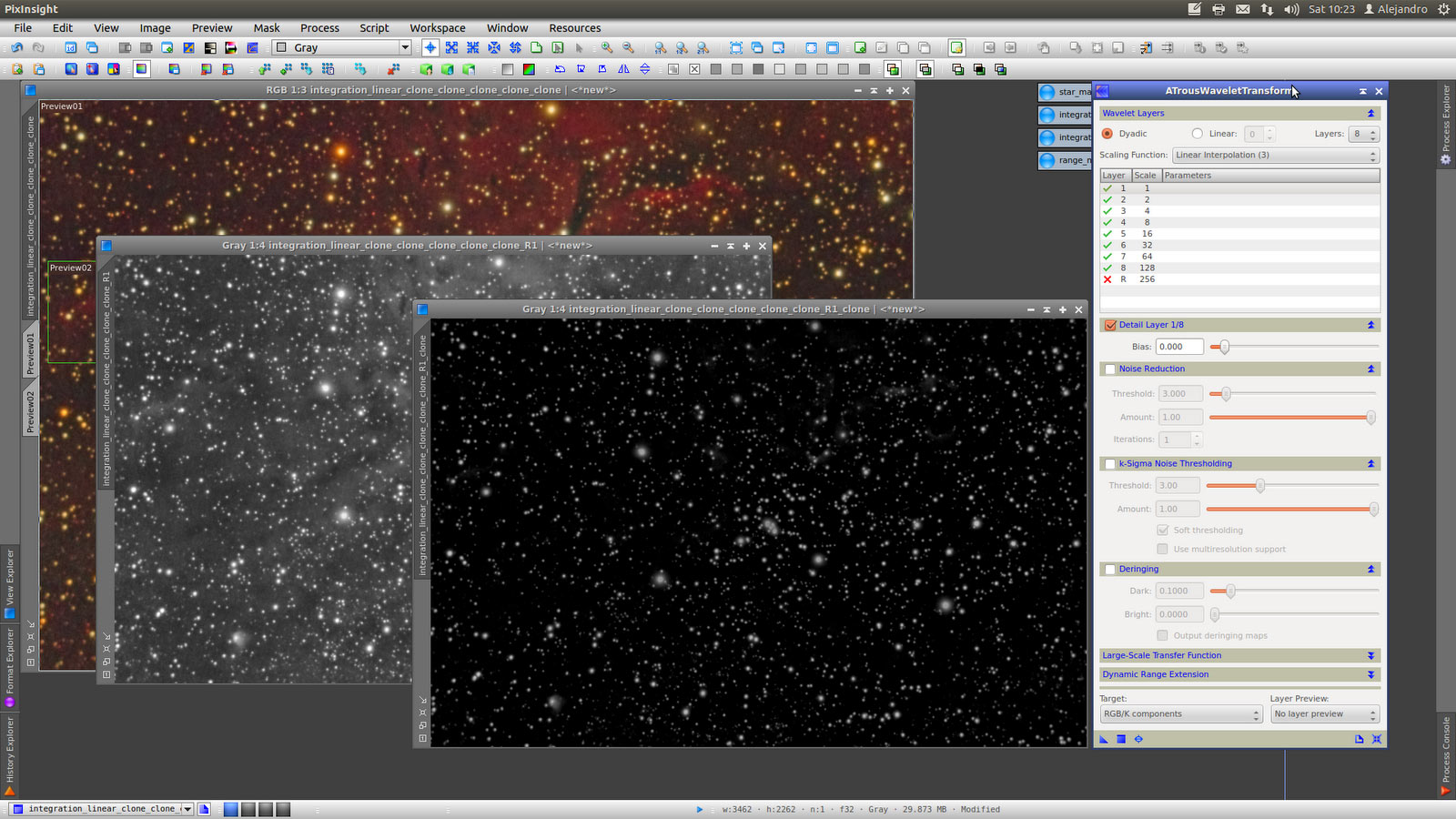
PixelMath to substract R_clone from R unchecking "rescalete" and after that apply ATWT to smoothness and built the rangemask over it.

Protecting bright nebulae apply CurvesTransformation to desaturate background.

Now invert the mask and apply CurvesTransformation to saturate nebula protecting background.
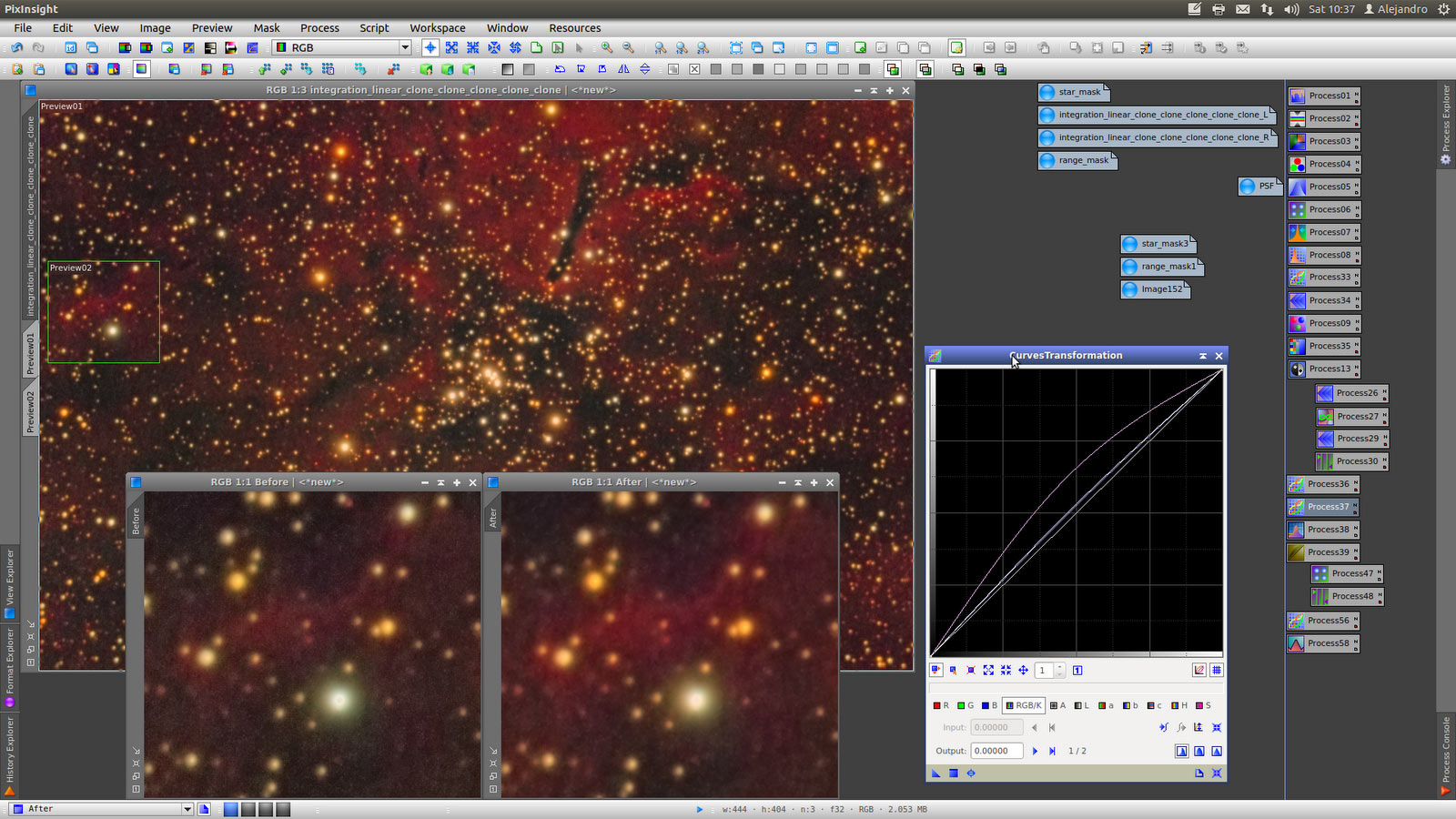
ACDNR to reduce noise.
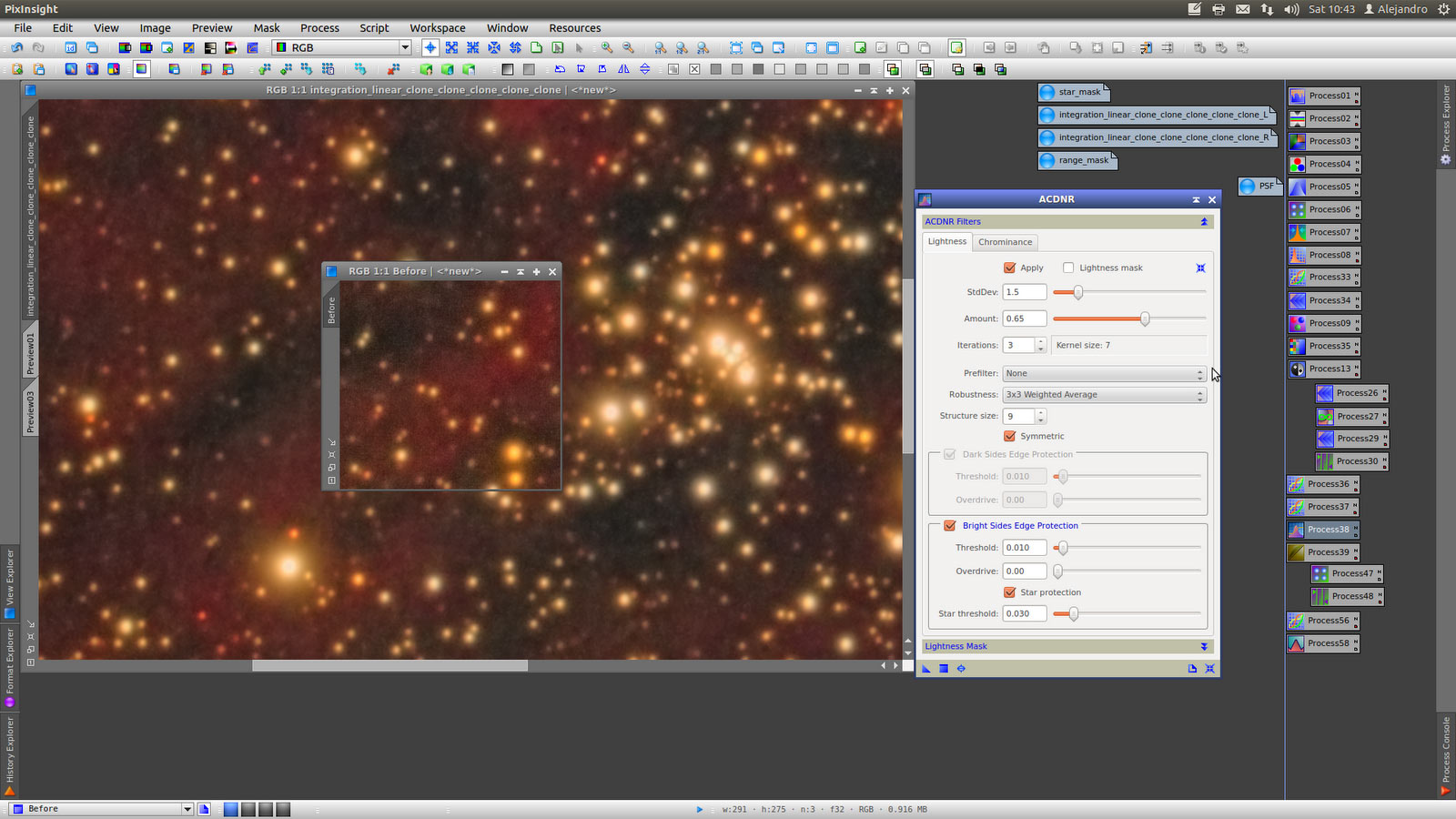
With the R channel protecting background apply LogStrech to increase nebulae.
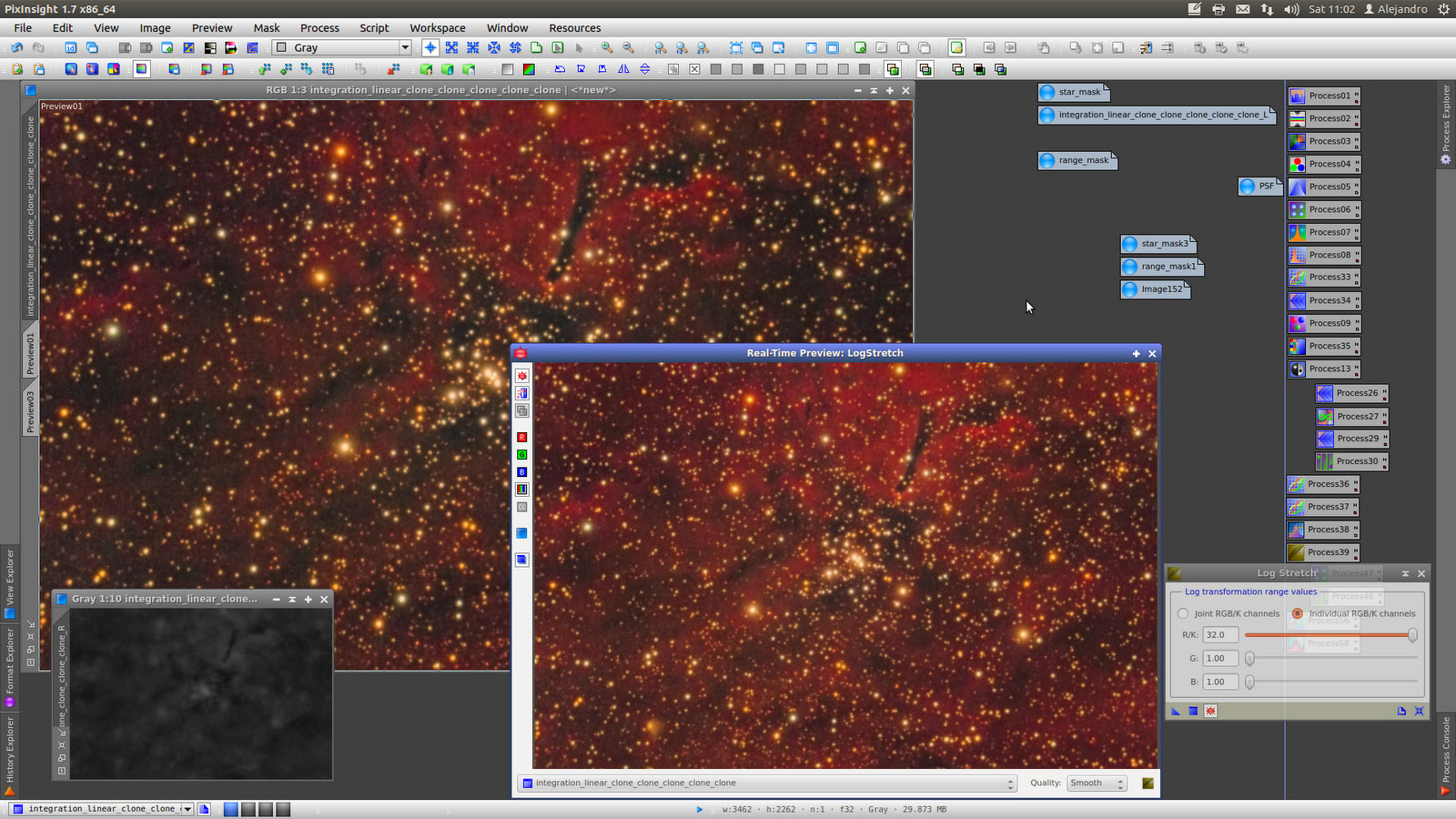
As the halos in stars has increase considerable i will tray to reduce and adjust colors in the stars. For that build a mask to protect background and stars cores but not halos. The mask is the result of BlendScript multiplying the starmask and rangmask. See Blending Modes
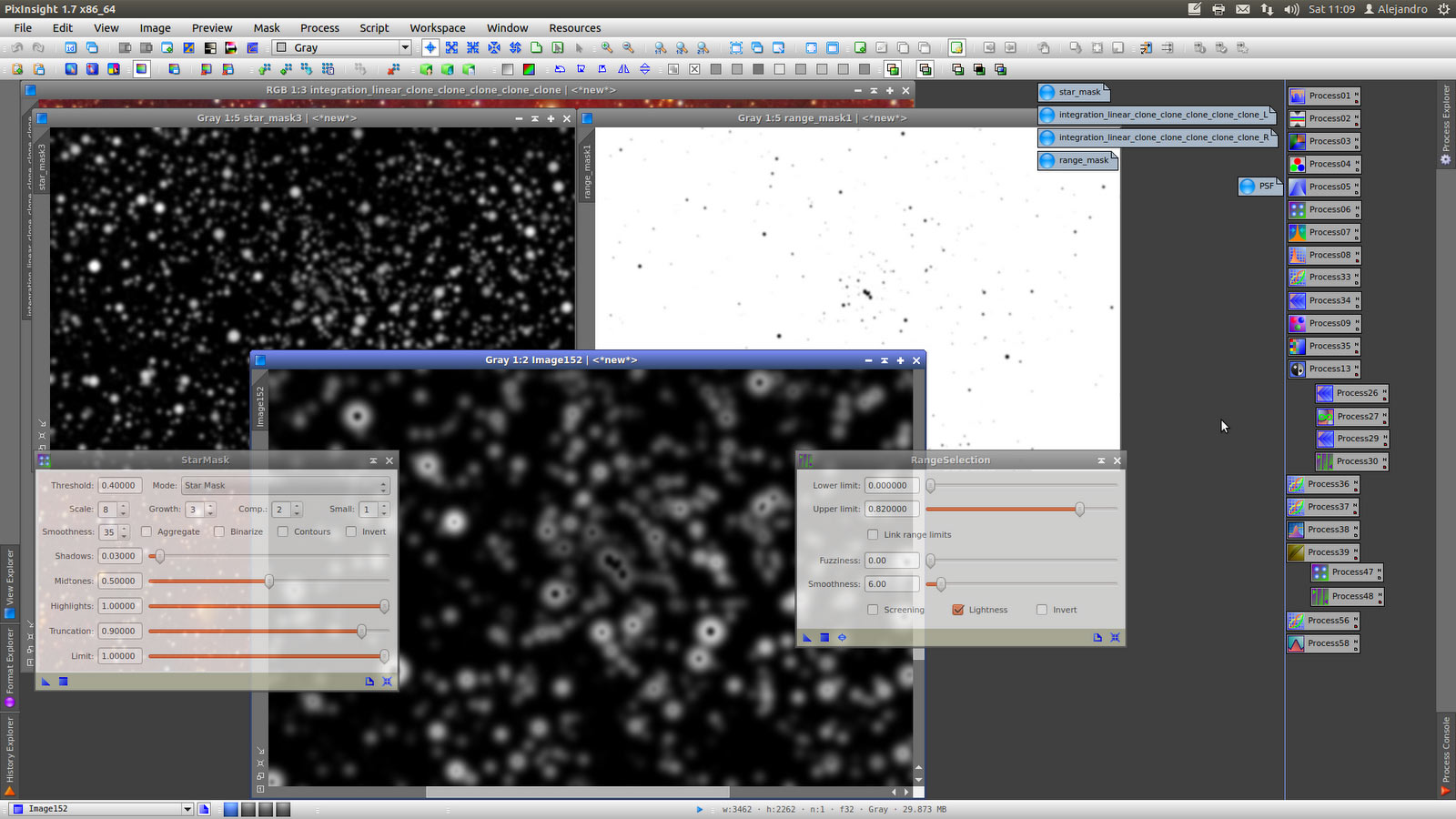
Apply CurvesTransformation in stars halos protecting with BlendMask.
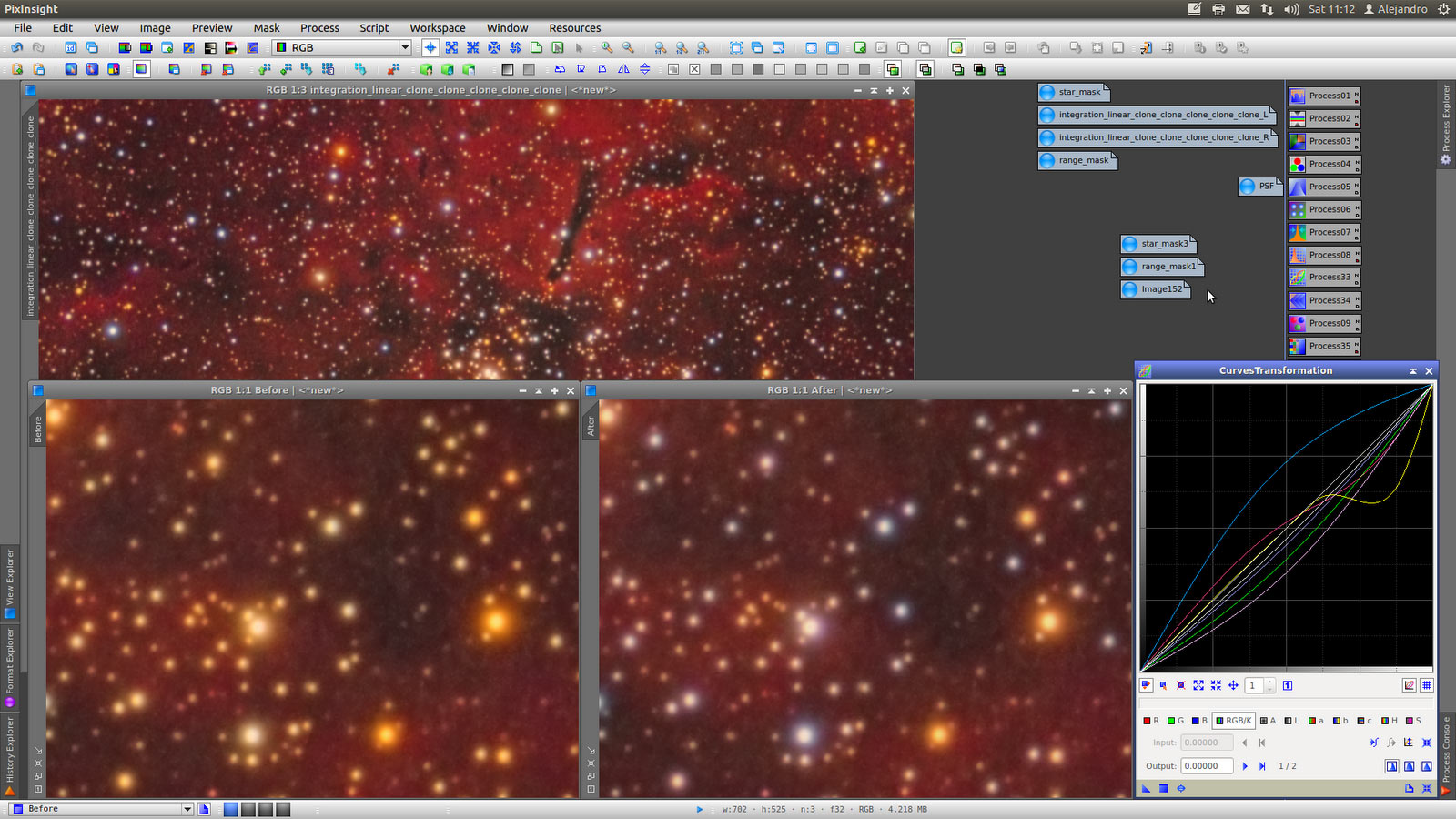
Final Unsharp without mask.
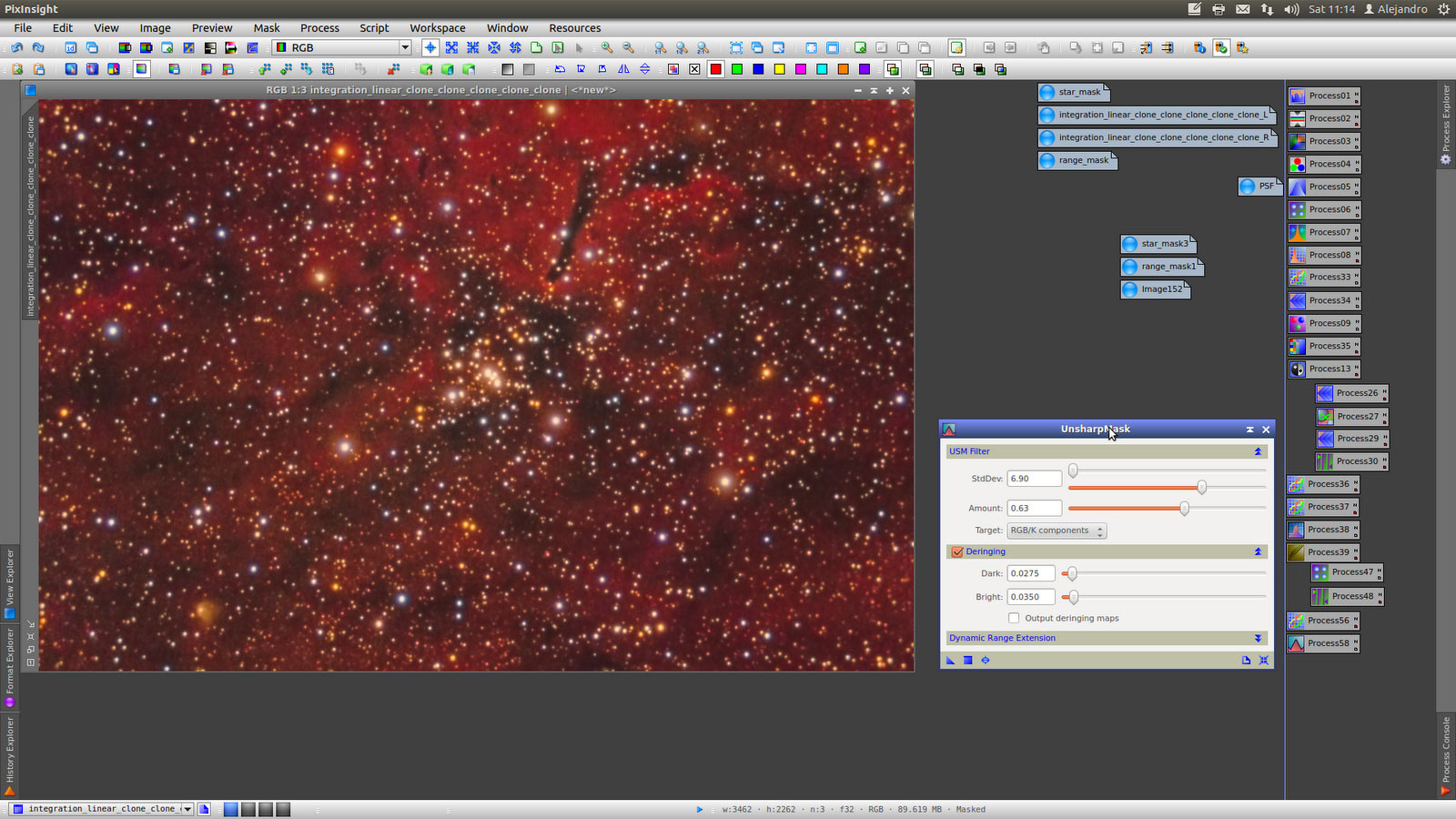
Final Image:
